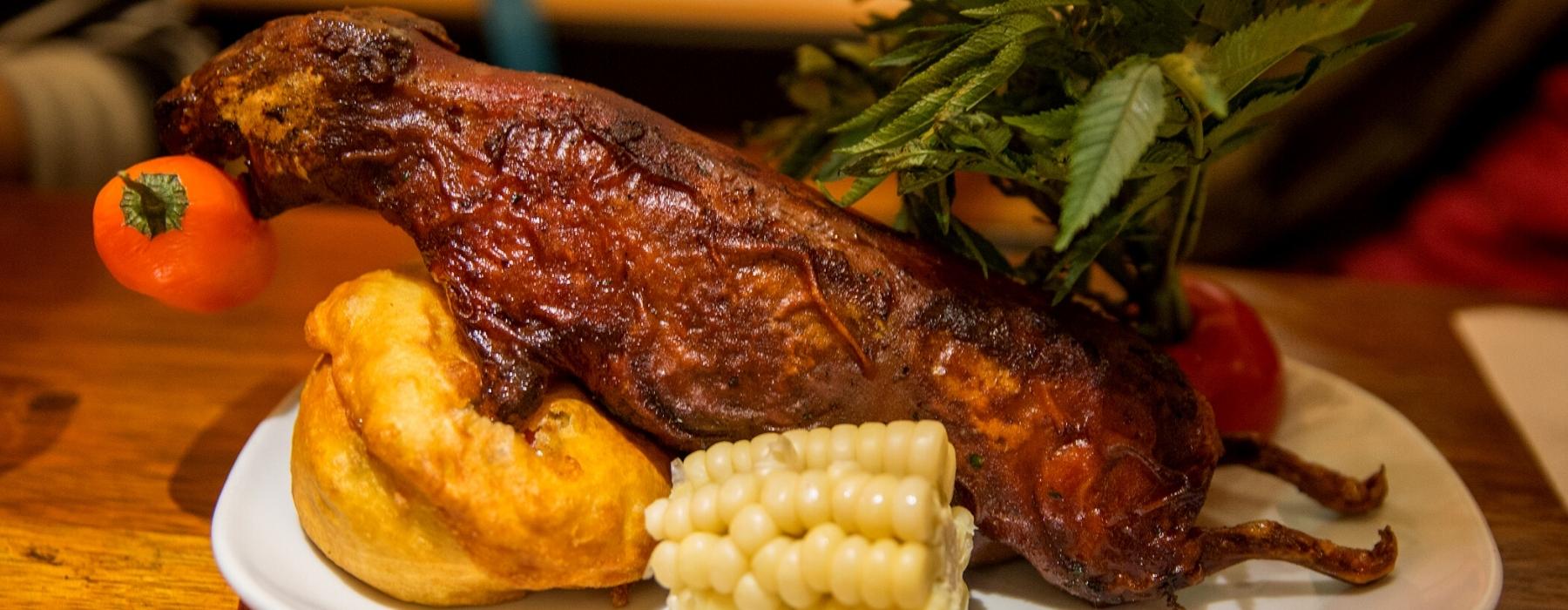
Peruvian Cuisine is one of the world’s most exciting culinary travel destinations, with an exquisite food scene in the Sacred Valley. Celebrate the essence of Andean culture through the wealth of its legendary flavors and aromas. Become intrigued by the cultural and agricultural origins of food; purple potatoes, exotic amaranth, Incan quinoa. Explore the intrinsically agrarian Andean worldview through a native perspective a culinary journey to the heart of food.
PERU’S FOOD CULTURE – THE ESSENCE OF CULINARY ART
Want to know more about Peruvian Food Culture? Maybe you’ve heard that Peruvian Cuisine is the next biggest thing. Or you’ve seen the buzz about top Peruvian Chefs taking the world by storm. What about the incredible Superfoods native to Peru and the fusion cuisine that blends native and imported traditions? Were the culinary traditions of Peru always this strong? What is it that makes typical Peruvian food so special and why has it suddenly become a hot topic?
The world’s recognition of world class Peruvian cuisine has caused the explosive growth of a culinary tourism industry proving there is so much more to Peru that just Machu Picchu.
PERUVIAN CUISINE & CULTURAL INFLUENCES
Peru is South America’s third-largest country and has three distinct regions within its borders. There are the Andean highlands, the coast, and the Amazon basin which is a rainforest on the eastern side of the Andean highlands. Each region offers different but influential indigenous culinary meats, fruits, and vegetables to their menus which provide diversity within Peruvian Cuisine.
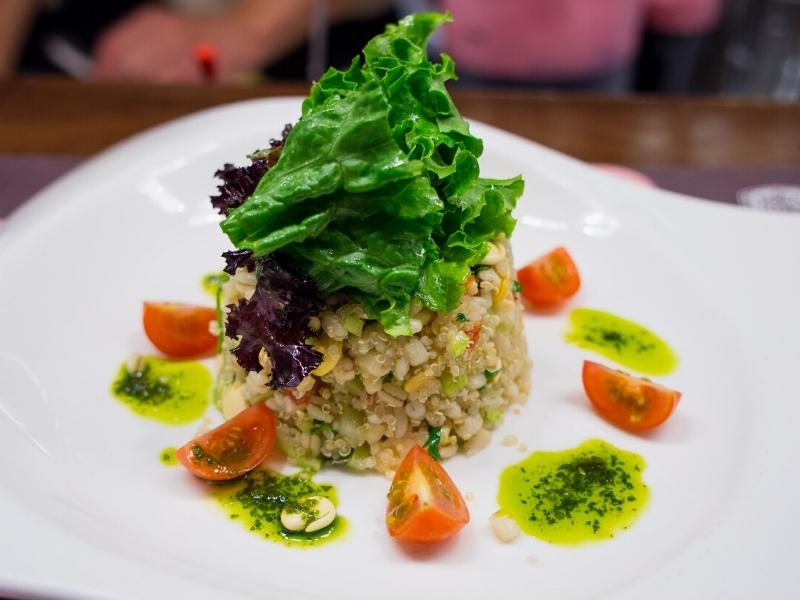
Peruvian food is often referred to as Criolla or Creole food because of the blend of Spanish, Asian, Incan and other European cuisine influences which are integrated into their cooking. Ingredients are based heavily on potatoes, beans, rice, beef, eggs, lamb, fish, corn, chicken and especially the Aji, or chili. The hot chili pepper is used to create stronger flavors in the food dishes which mostly build on Spanish and indigenous foods. Peruvian food offers spectacular cultural and biodiverse combinations of cooking techniques and ingredients which were brought to this land from across the globe during several centuries of immigration.
The cultivation of beans, chili peppers, squash, and corn by Peru’s original inhabitants around 3000 BC set the culinary scene. Next, the Inca empire, the dominant power during the 1300s, started to grow potatoes in terraces on the hillsides throughout their vast lands. Peru was the first area of the world to grow potatoes and the potato crop is still a staple throughout South America today.
The Spanish and European influences came next in the 1500s with the Spanish conquest. They introduced chicken, pork and lamb and began to grow crops such as beans, carrots, barley and wheat. African immigrants were then imported to work in the fields, due to diminishing numbers of native Peruvians (from death by disease) .The infusion of African culinary culture began at that time with the introduction of their indigenous products to Peru.
African slaves introduced numerous different spices, bananas, pumpkins and sugar cane. They made pumpkin dough and used sugar cane to create a sweet pastry that they called picarones. They created the ultimate delicious beans and rice dish tacu tacu. The cultural diversity of Peru’s cuisine is what separates it from the rest of the food world. Peruvian cuisine is based on the infusion of different ethnic ingredients and specific cooking techniques to create lush and powerful flavor profiles.
Within Peru, as I mentioned, there are three diverse culinary regions. African, Asian and Spanish/European ethnicity can be seen in the style and dishes typical to each of the regions. The different landscapes, climates and cultural diversity set Peru apart from other countries, even close neighbors, by enabling a more substantial and diverse culinary experience.
The tropical region of the Amazon basin is inhabited by many different tribes and families who live within the rainforest’s confines. Most of the tribes still surviving today are considered hunters and gatherers and feed off the many fruits, wild game, spices, peppers, nuts and vegetables that grow and live naturally in the rainforest. The communities have markets and street corner vendors who deliver a culinary experience comprised of fresh, natural and healthy ingredients.
The rainforest is an abundant habitat that provides diversity in what it brings to the local cuisine. Over 2000 amazon fish species are eaten on a daily basis along with an abundance of tropical fruit like lucuma, cherimoya, and guanabana. There are other naturally grown foods such as guava, avocado, yams and yucca which are a staple food in the rainforest region. A local favorite, juanes, is a delectable dish that’s sold at markets throughout this region and is made of chicken (or any other meat available) and rice rolled into banana leaves.
The Peruvian Andes have rich soil which is great for farming and allows for the growth of potatoes, oca, tarwi, quinoa and olluco to name but a few. From the time of the Incas, the livelihood of the locals depended on the production of traditional crops such as roots, tubers, grains, vegetables, fruits and the rearing of edible animals such as guinea pigs, llamas and camelids.
Their most prevalent meals are stews and soups. All of the meats and vegetables are put into the same pot and cooked for many hours to infuse the natural flavors throughout the dish. Meats, maize, hot chilies, potatoes, and carrots are all cooked together for hours. This is something which takes time due to the lower oxygen levels in the highlands. Another cooking method utilized for centuries in the Andes is called Pachamanca.
Seasoned meats, herbs and vegetables are placed underground on hot stones and left to cook for many hours. The most popular dish in the highlands is Cuy Chactado which is fried guinea pig. The guinea pig has been a staple in the Andean culture for centuries, even before the Incas ruled.
The coastal region of Peru is very mountainous and rocky with dunes and rolling hills of barren sand. Peru’s coast runs from Chile to Ecuador and has numerous small rivers that run down the mountainsides and through vast sand dunes then empty into the Pacific Ocean. The coast is abundant in seafood from the ocean and the many rivers. The coast of Peru has two separate divisions that bestow different climates and food products.
The area is biodiverse with tropical wildlife such as crocodiles, boas, iguanas, anteaters, sloths and many others. There are warm sunny valleys, rice fields, and palm trees on beautiful warm turquoise beaches. Some region-specific cuisine staples are, Chicha Morada, Chicha de Jora or corn beer. This beer is locally made and used to cook with solely over other liquids. Lamb and goat are more predominantly used along with maize tamales in the northern region of the coast.
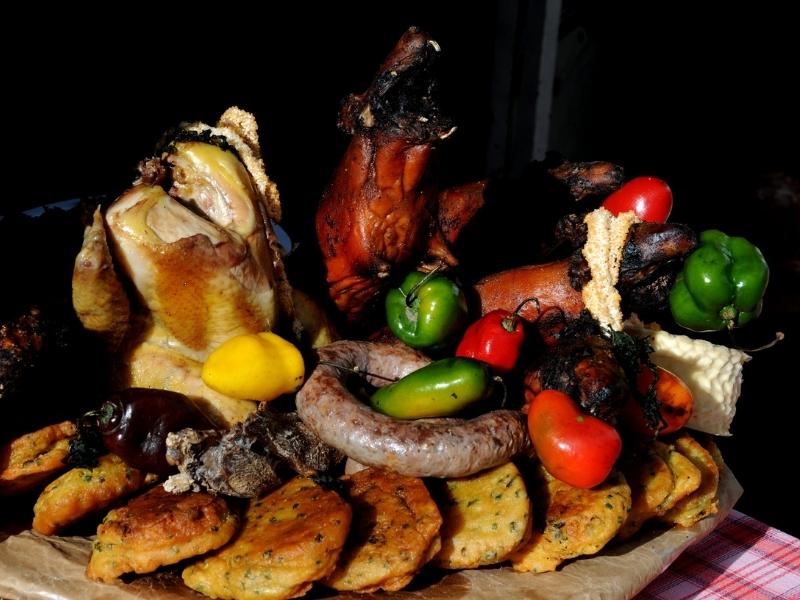
It is the Cusco’s traditional dish and also considered as the main culinary art of Corpus Christi. Chiri Uchu means cold chili or cold spicy in Quechua. This food is a mixture between the coast, highland and jungle cuisine, having its origins in the time of the Incas in the Tahuantinsuyo. The ingredients used to prepare this are: roasted white corn, cheese, guinea pig, chicken, charqui (jerky), cecina, seaweed, fish roes and rocoto.

It is prepared with fish. It can be prepared either with river trout or sea trout. This food was served for the first time in 1927. This typical dish is made with fried fish, rice, cassava, and salsa criolla (onion based condiment) if you like. It is very easy to find in all restaurants in the Imperial city.

It is a delicious Andean soup which is a traditional dish in Cusco. Chairo is a name of Quechua and Aymara origins meaning “type of food”. It is a hearty soup that was made originally for farmers, who walked for hours to get to their workplaces; they needed a meal that would not spoil. For that reason, they used ingredients that would make it easy to prepare and would endure, such as potato starch, which is the main ingredient for its preparation, lamb, dried beef, sweet potato, peas, carrots, broad beans, spearmint, oregano, parsley, cumin, and salt.
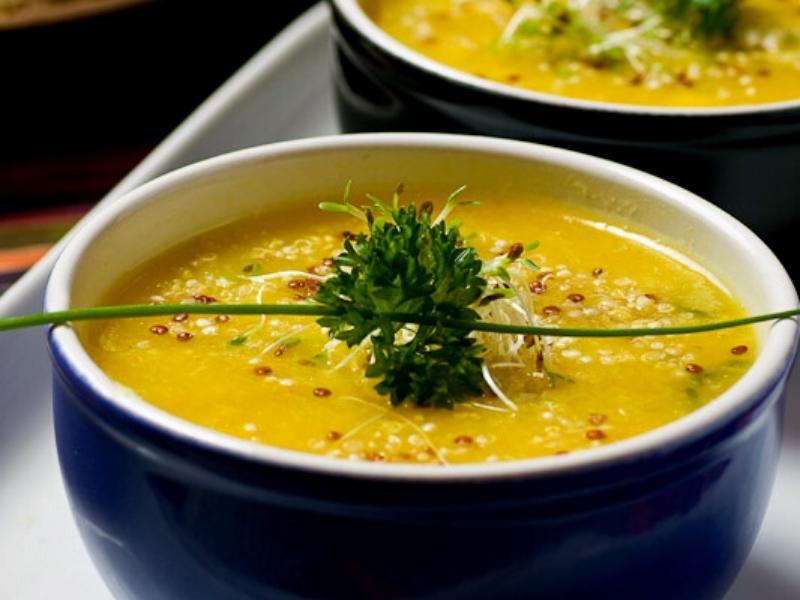
There is a great variety of soups in Cusco. Many of them are made from wheat, quinoa, and/or squash. One of the most popular among tourists visiting the city of Cusco is quinoa soup, which is a very light and delicious soup, recommended for cold seasons. Moreover, quinoa is a type of food that has been growing in popularity around the world for its great contribution to nutrition.
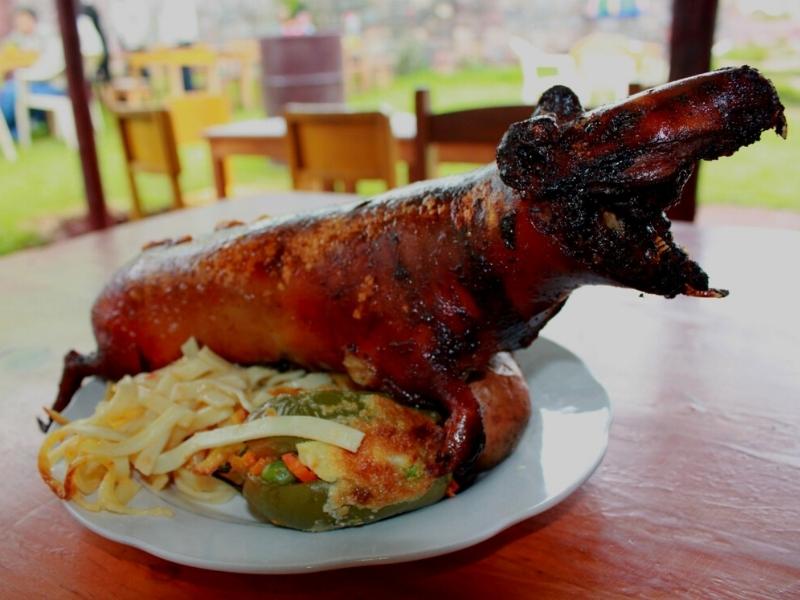
It is one of the most emblematic dishes of the Peruvian highlands, especially in Cusco. The guinea pig is a very important ingredient for preparing this dish. First, it must be completely clean to put it into boiling water. Then it is seasoned with all spices and finally put it inside an oven to cook. This typical meal can be served with rice, potatoes, salad and fried cassava. You can also enjoy this dish with chicha morada (sweet beverage of purple corn) or chicha de jora (corn beer).
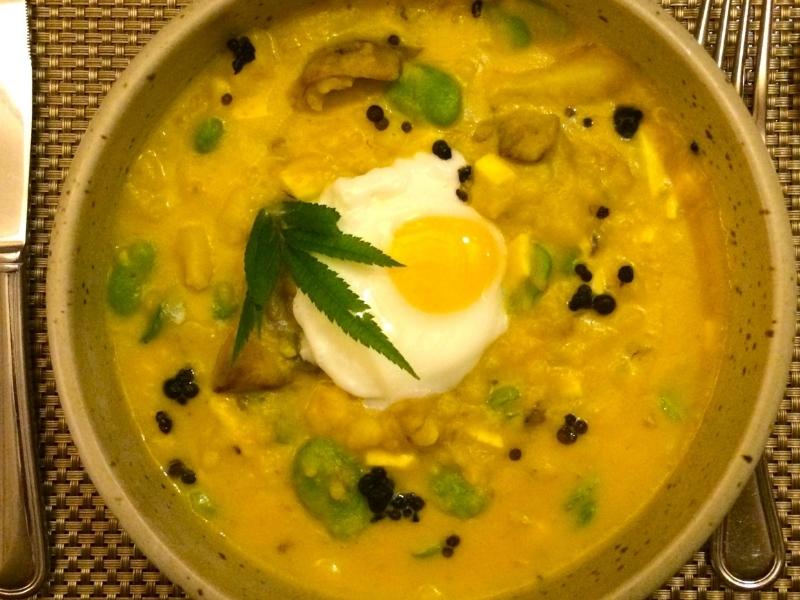
Mushrooms were food highly respected by the Incas and even today they continue conquering the most demanding palates around the world. This dish is eaten during winter time to protect us from the cold of the mountains. It is a nutritious dish, considered a good choice for vegetarians. Its ingredients are mushrooms, broad beans, onions, dried red chili, potatoes, olive oil, milk, cheese and black mint.
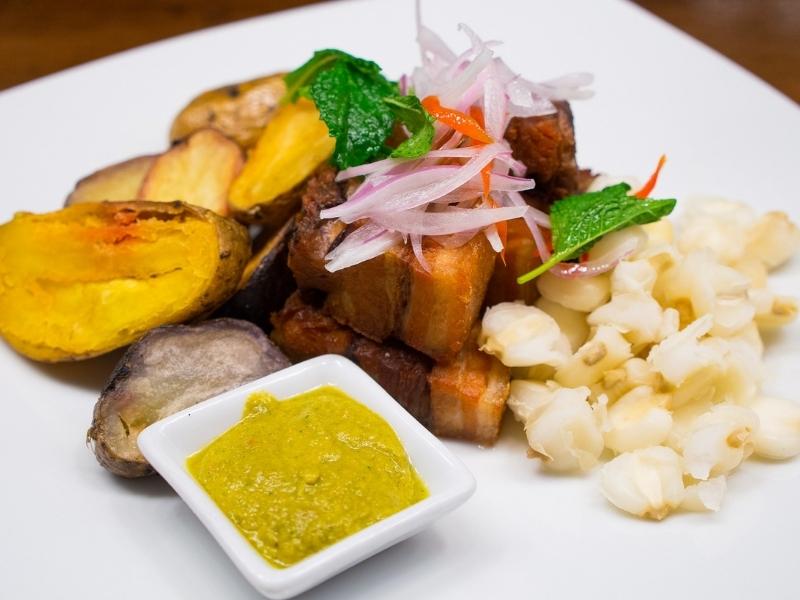
It is one of the favorite dishes among tourists visiting Cusco. Pork is cooked in its own fat, which is the reason of its peculiar flavor. The dish is served with mote (hominy) and Salsa Criolla. It should be noted that sale of pork cracklings started in 1927 and 1928.
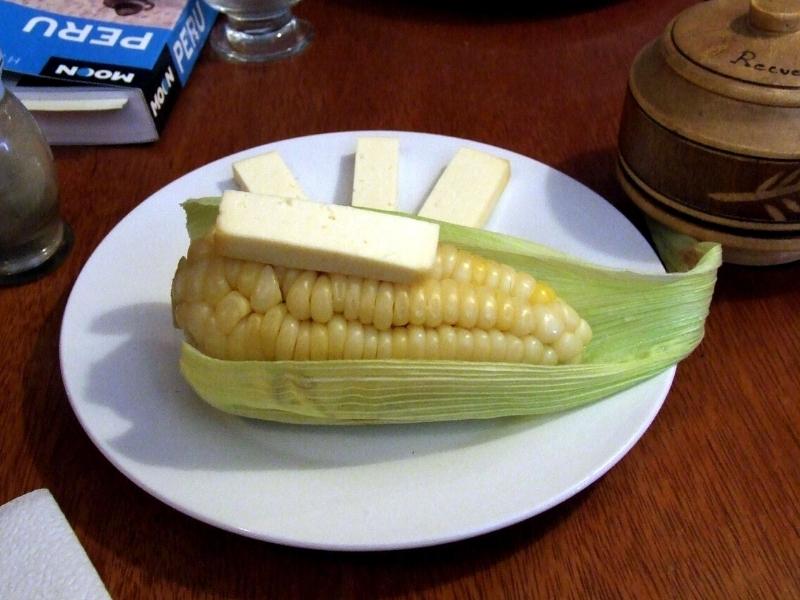
It is one of the easiest dishes to prepare in the city of Cusco. You can find the best corn in the Sacred Valley (Valle Sagrado) located in Urubamba, which has an important historical value. This typical dish is one of the most important in the Peruvian cuisine and it is served as a starter. The flavor is a mixture between sweet (corn) and savory (cheese).
Unlike the pork cracklings, this dish is smaller. In Cusco, This is a traditional dish that is offered in all restaurants in the city. The preparation consists of seasoning the pork inside and outside with salt, pepper, cumin, crushed garlic, mustard, oregano, chicha de jora, fresh yellow chili (ají amarillo), ground dried yellow chili (ají mirasol) and ground sun-dried red chili (ají panca). Then leave it to stand for one night and on the following day put it inside the oven.
It is an exquisite dish from the navel of the world. It can be easily found in Picanterías (restaurants specialized in spicy food) around Cusco. The main ingredient for its preparation is pig’s feet. This dish also includes onions, garlic, bay leaf, papa canchán (a variety of potato), tomato, vegetable oil, parsley, spearmint, pepper and oregano to taste.
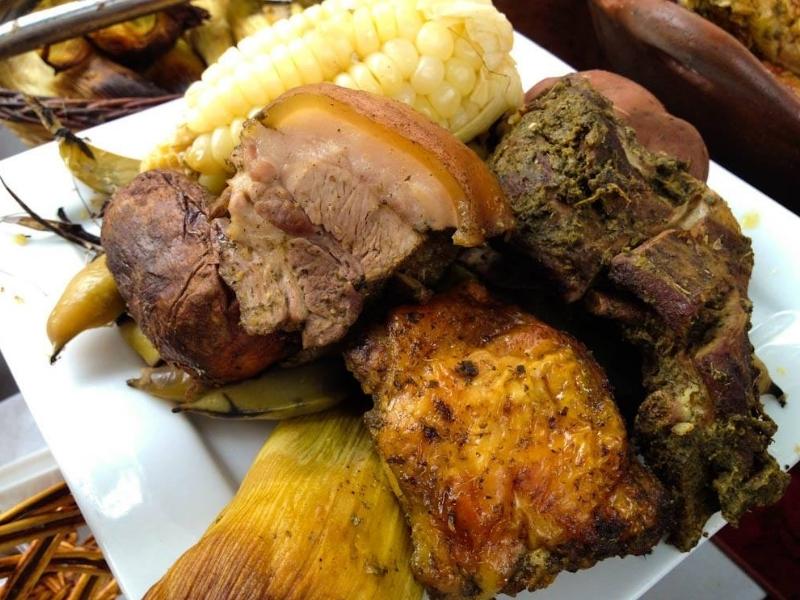
While not many tourists know about it, a pachamanca is one of the greatest cultural experiences one can have in Peru. This unique culinary adventure involves the ancient Inca ritual of burying and baking locally-grown foods.
Taken from the Quechua words ‘pacha‘ meaning earth and ‘manka‘ meaning pot, it is essentially a Peruvian-style barbecue that takes hours to prepare. Because they are rare and usually reserved for special occasions, pachamanca ceremonies are a delight to behold. You may have plucked up the courage to try cuy or sink your teeth into an alpaca steak, but if you haven’t tried a ‘pachamanca experience‘ you are missing out.
This ancient Inca ritual is one not many tourists know of, and yet we consider it to be one of the best culinary experiences you can have in your life. In Peru, adventurous eaters have the opportunity to enjoy some of the world’s most unique dining.
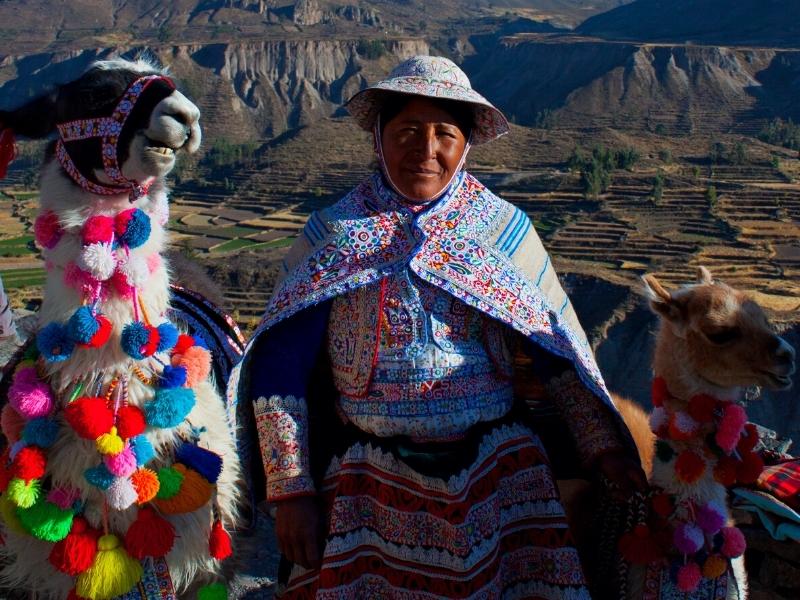
Feel the magic and the energy of Cusco and Machu Picchu, then continue to where the legend began – Lake Titicaca, to get off the beaten path and immerse yourself in the local culture and enjoy the peace and tranquility on the shores of the Lake.

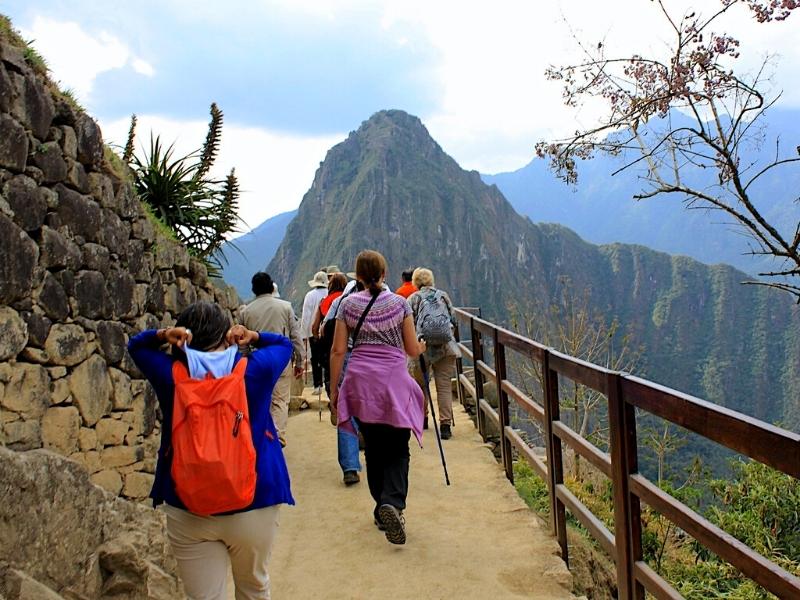
Get to know the majestic city of Cusco, cradle of the greatest civilization in South America, the Incas and their great works of engineering, the citadel of Machu Picchu by train.


Enjoy an incredible vacation, in the heart of the Inca empire, Cusco, our travel program will take you to the most famous tourist attractions of Cusco, such as the Sacred Valley of the Incas, Machu Picchu, in very cozy hotels.

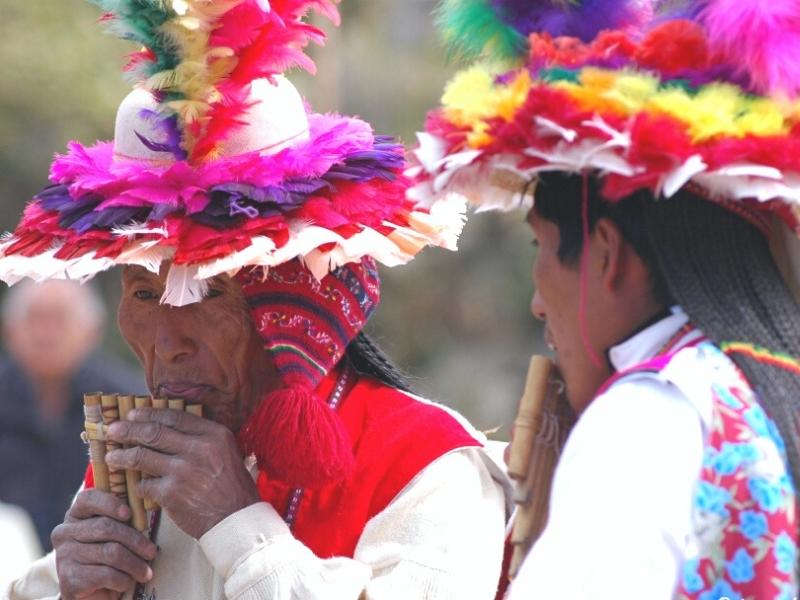
Sublime landscapes, wildlife, history, culture - Peru has more than its fair share. Its famed snow-capped Andean peaks shelter the temples and fortresses of the Inca and other pre-Columbian cultures, linked by a network of paved trails.

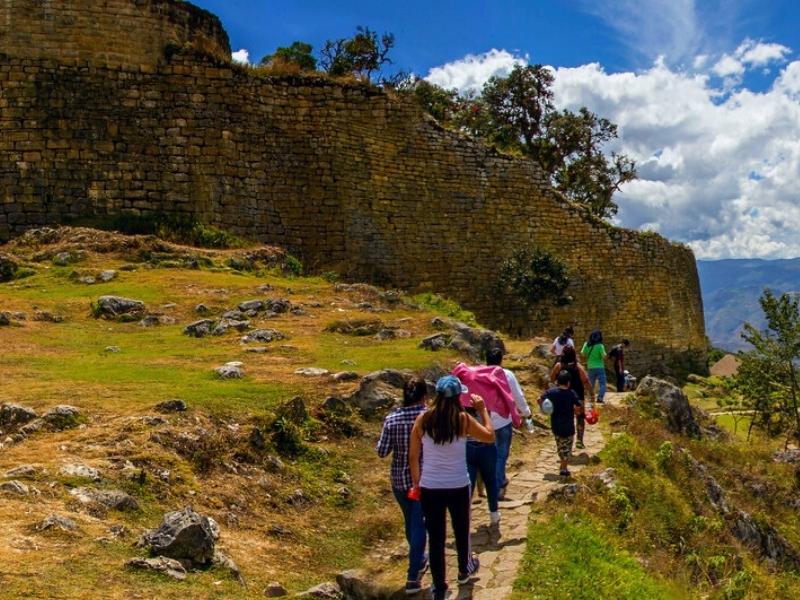
Visit Peru with your family or friends, and enjoy the best natural and cultural wonders. In this tour you will discover the best of northern Peru, where is one of the highest waterfalls in South America, the fortress of Kuelap, and the short route to Machu Picchu through an Inca trail, enjoying the empire of the Incas in all its greatness.

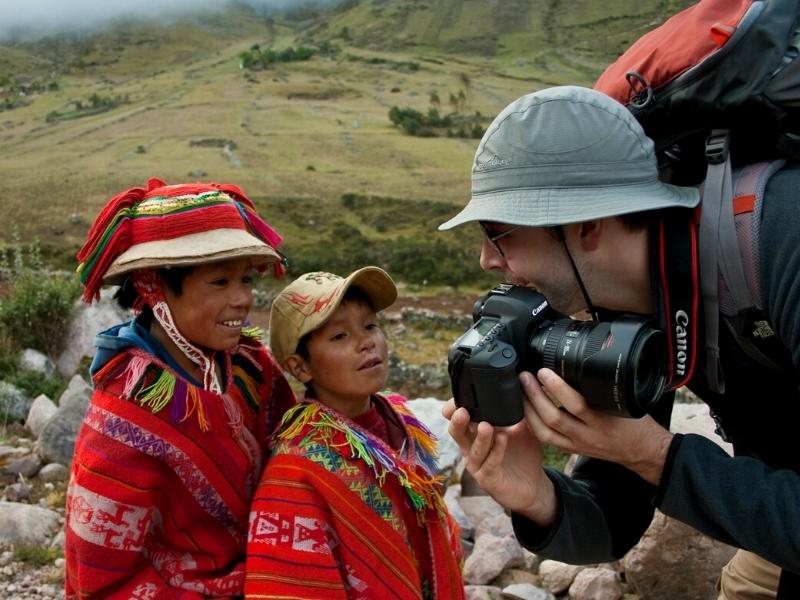
The Lares Trek combines high Andean trekking with a chance for genuine interaction with the most isolated indigenous communities which keep the inca culture alive. Majestic glaciers, amazing glacial lakes, waterfalls, llamas, and alpacas.

Explore the Lares Trek to Machu Picchu, this trip takes you to the heart of the Andes where few tourist have ventured, you will enjoy the Andean traditions and original indigenous villages, who are still keeping the incas traditions, imposing glaciers, green lakes, waterfalls, llamas and alpacas.

See Peru in comfort and style with Andean Great Treks. We’ll create a personalized Peru tour just for you, with the perfect mix of locations and activities. Discover the ancient Incan citadel of Machu Picchu with an expert private guide. Enjoy the epic scenery of the Sacred Valley of the Incas and the rich history of Cusco. Explore the wonders of the great green Amazon.

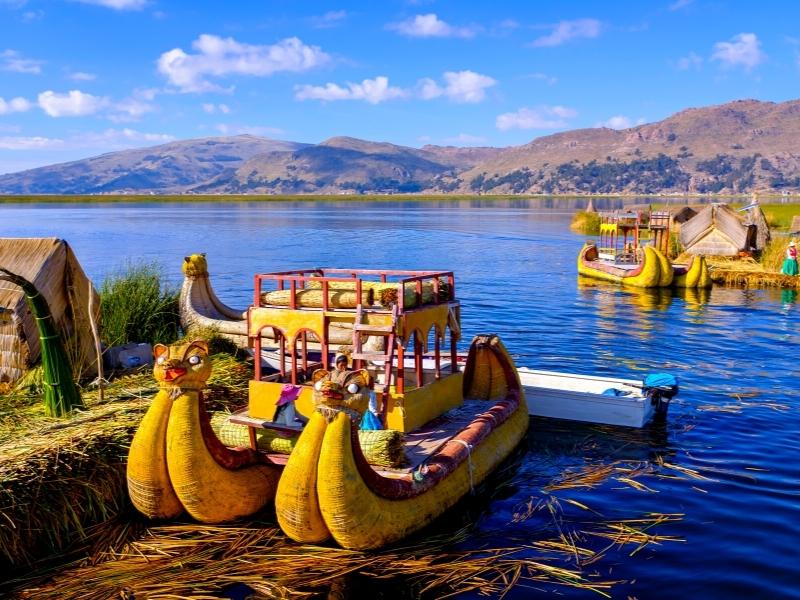
The wonders of Peru await you as you hike through the Manu Amazon rainforest, traverse the plains of the Sacred Valley of the Incas, and stroll the cobbled streets of Cusco on this 15-day trip from Lima. Search for monkeys and medicinal plants in the Amazon, travel the ancient road to Machu Picchu, experience a stay in a traditional community on the shores of serene Lake Titicaca.


The top sights of Peru will leave all the family thrilled by the scenic grandeur, ruined temples, colonial cities, amazing inca trail to Machu Picchu, the Inca Lost City, once buried under the tropical forest which surrounds it.

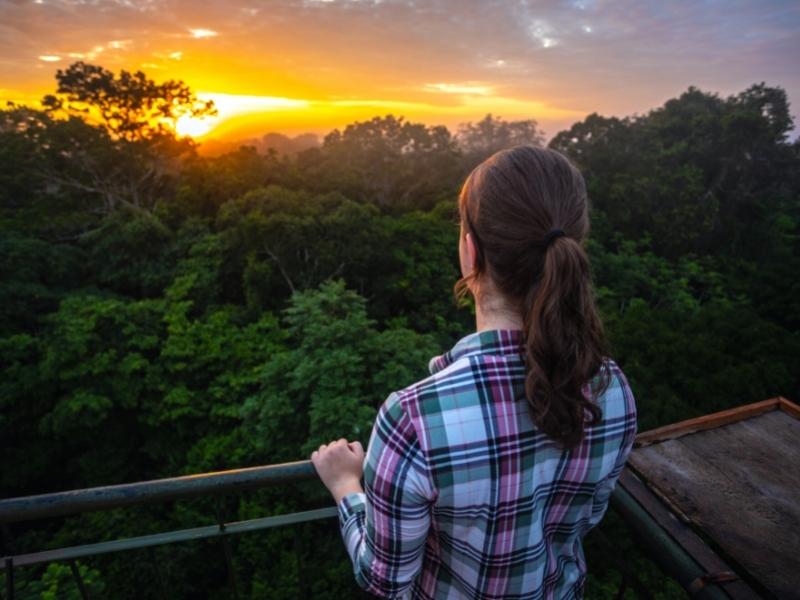
Dive deep into the culture and landscapes of Peru with this adventure to Machu Picchu, the Amazon and more. Search for wildlife along jungle trails and rivers in the rainforest from a comfortable lodge then head up into the Andes to Cusco, the capital of the Inca empire.


Peru is a multicultural country, and megadiverse, because it has different ecological floors, which have special microclimates, where ancient civilizations dominated the cold landscape of the Andes, and the hot coasts of the Pacific. It is also part of the great Amazon forest where a great variety of unique animals and plants coexist. This tour will take you to the most impressive landscapes in South America.


Enjoy the best vacations in Peru. Our Majestic Peru travel program will take you from the coast and its impressive Nazca lines, to the lodge in the Amazon forest surrounded by many wild fauna, you will travel the Inca trail to Machu Picchu, culminating your trip in Cusco.

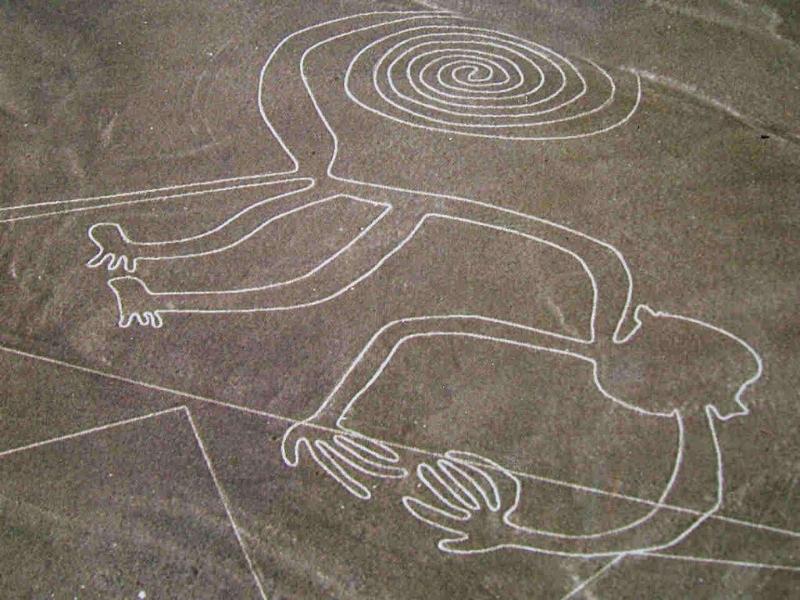
Visit Peru and discover its highlights from Lima to Cusco on an exciting journey that encompasses modern cities and ancient worlds. From the depths of the Colca canyon to the heights of the Andes and on to the unique islands of Lake Titicaca, be immersed in fascinating Peruvian culture while discovering its history buried deep within the walls of lost cities.

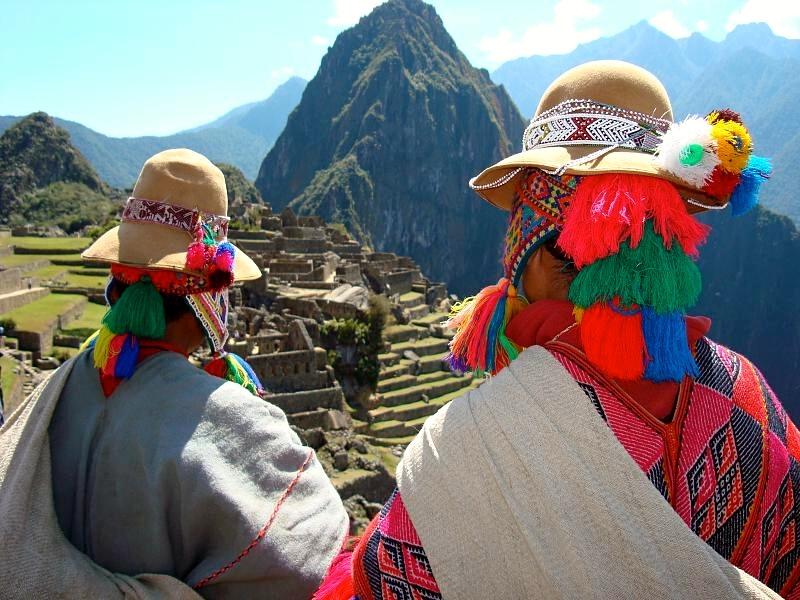
Colours of Peru calls to you with all the allure of the ancient and the mysterious. From the soaring peaks of the Andes to the lush Amazon Rainforest, from the pre-Colombian ruins in the mountains to the Spanish colonial mansions on the coast, 14 Days in Peru offers you exciting adventures and unique experiences.


Your luxury trip to Peru includes a selection of Andean and Amazonian landscapes. We will help you to explore this welcoming and varied country, planning each step of your trip, with the best services. With the help of amazing expert guides, you can enjoy all that Peru has to offer, every detail is well taken care of.

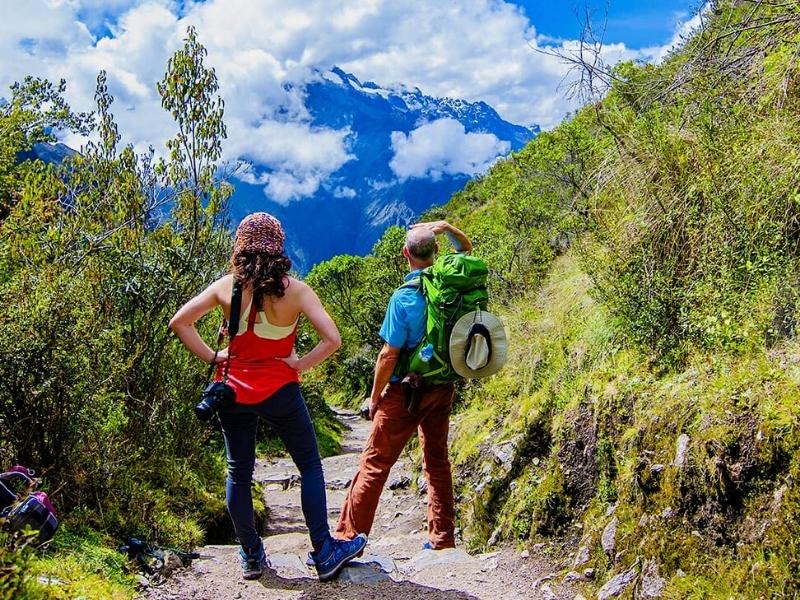
You’ll spend the next five days trekking the iconic Inca Trail, crossing epic mountain passes and discovering ancient Inca ruins en route on a privately guided trek to the magnificent citadel of Machu Picchu.

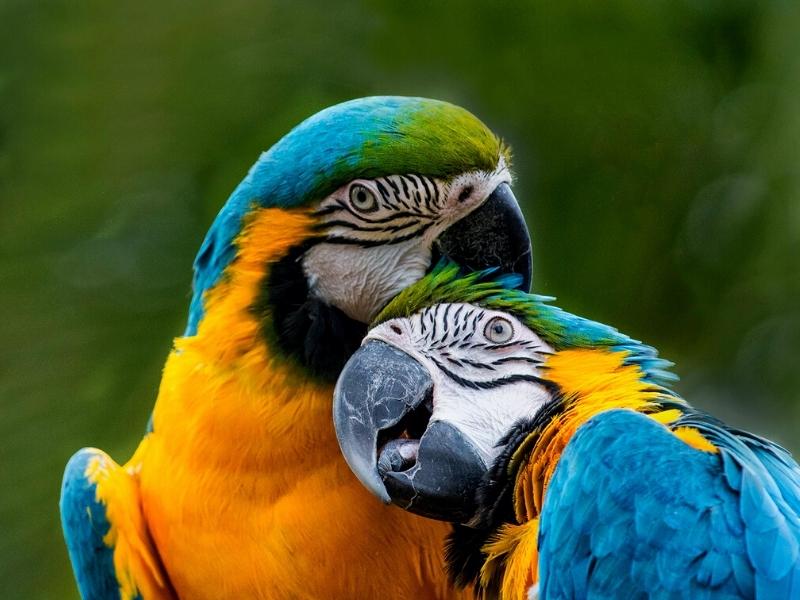
Peru is a country with different cultures and beautiful landscapes. It has one of the best gastronomy in the world. This tour is designed for travelers looking for unique and special moments in their vacations, and families who want to avoid crowds. You will visit the ancient city of Lima, the Amazon forest, the beautiful sacred valley of the Incas, the wonder of Machu Picchu.

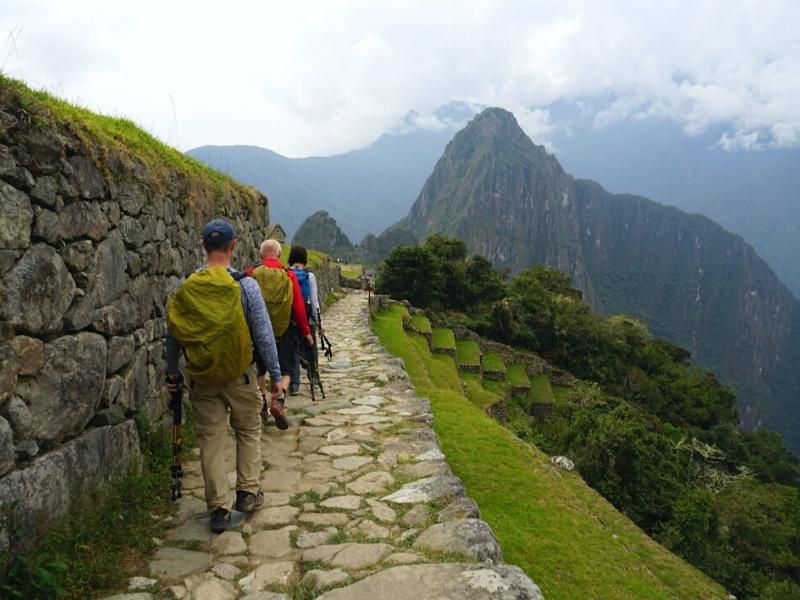
Discover the world wonder of Machu Picchu from the Sacred Valley of the Incas. Travel by train to the town of Aguas Calientes where you will spend a comfortable night enjoying the best Peruvian food.


Get to know the true world of mysticism and sacred cults of the Inca Culture, this adventure to Machu Picchu offers you, unique places, little-visited treks, and many ancestral knowledge.
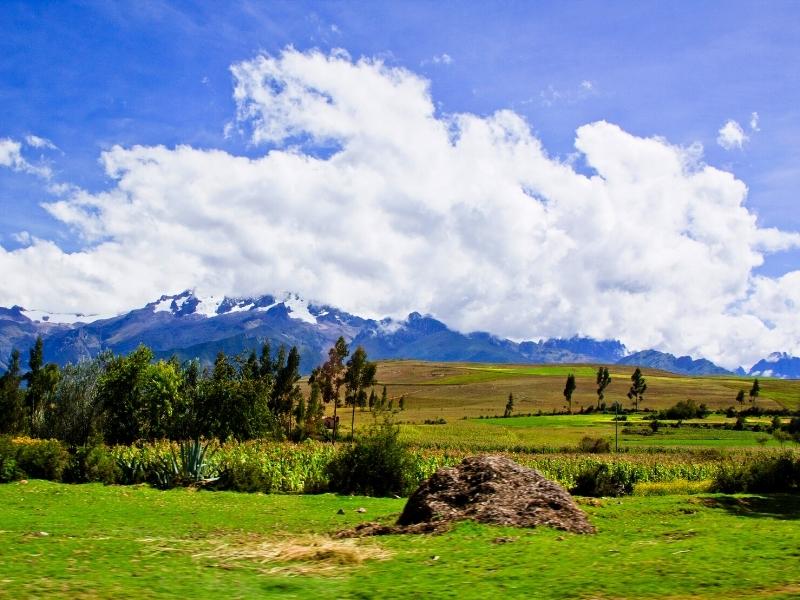
Explore the Sacred valley of the Incas, Visit the best archaeological remains of the Incas in Chinchero, Moray, Ollantaytambo and Pisac. Beautiful landscapes surrounded by snowy peaks and corn fields.
